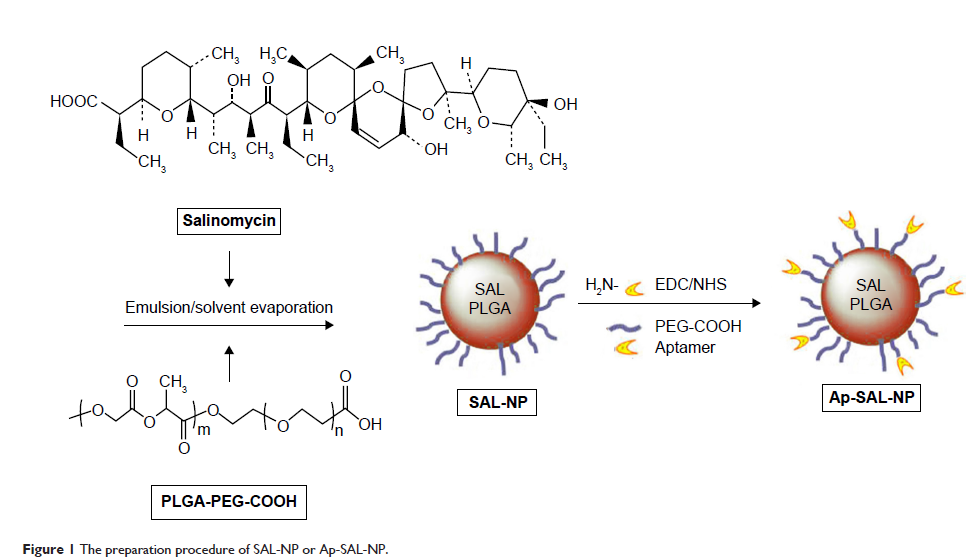9 0 5 7 8
论文已发表
注册即可获取德孚的最新动态
IF 收录期刊
- 2.6 Breast Cancer (Dove Med Press)
- 3.9 Clin Epidemiol
- 3.3 Cancer Manag Res
- 3.9 Infect Drug Resist
- 3.6 Clin Interv Aging
- 4.8 Drug Des Dev Ther
- 2.8 Int J Chronic Obstr
- 8.0 Int J Nanomed
- 2.3 Int J Women's Health
- 3.2 Neuropsych Dis Treat
- 4.0 OncoTargets Ther
- 2.2 Patient Prefer Adher
- 2.8 Ther Clin Risk Manag
- 2.7 J Pain Res
- 3.3 Diabet Metab Synd Ob
- 4.3 Psychol Res Behav Ma
- 3.4 Nat Sci Sleep
- 1.9 Pharmgenomics Pers Med
- 3.5 Risk Manag Healthc Policy
- 4.5 J Inflamm Res
- 2.3 Int J Gen Med
- 4.1 J Hepatocell Carcinoma
- 3.2 J Asthma Allergy
- 2.3 Clin Cosmet Investig Dermatol
- 3.3 J Multidiscip Healthc

聚 (乳酸 - 共 - 乙醇酸) 的纳米颗粒与 CD133 适体结合以将盐霉素靶向递送至 CD133+ 骨肉瘤的癌症干细胞
Authors Ni MZ, Xiong M, Zhang XC, Cai GP, Chen HW, Zeng QM, Yu ZC
Published Date March 2015 Volume 2015:10 Pages 2537—2554
DOI http://dx.doi.org/10.2147/IJN.S78498
Received 2 December 2014, Accepted 18 February 2015, Published 31 March 2015
Background: Cancer stem cells (CSCs) possess the
characteristics associated with normal stem cells and are responsible for
cancer initiation, recurrence, and metastasis. CD133 is regarded as a CSCs
marker of osteosarcoma, which is the most common primary bone malignancy in
childhood and adolescence. Salinomycin, a polyether ionophore antibiotic, has
been shown to kill various CSCs, including osteosarcoma CSCs. However,
salinomycin displayed poor aqueous solubility that hinders its clinical
application. The objective of this study was to develop salinomycin-loaded nanoparticles
to eliminate CD133+ osteosarcoma CSCs.
Methods: The salinomycin-loaded
PEGylated poly(lactic-co-glycolic acid) nanoparticles (SAL-NP) conjugated with
CD133 aptamers (Ap-SAL-NP) were developed by an emulsion/solvent evaporation
method, and the targeting and cytotoxicity of Ap-SAL-NP to CD133+ osteosarcoma CSCs were evaluated.
Results: The nanoparticles are
of desired particle size (~150 nm), drug encapsulation efficiency (~50%), and
drug release profile. After 48 hours treatment of the Saos-2 CD133+ osteosarcoma cells with drugs formulated in Ap-SAL-NP, SAL-NP, and salinomycin,
the concentrations needed to kill 50% of the incubated cells were found to be
2.18, 10.72, and 5.07 µg/mL, respectively, suggesting that Ap-SAL-NP could be
4.92 or 2.33 fold more effective than SAL-NP or salinomycin, respectively. In
contrast, Ap-SAL-NP was as effective as SAL-NP, and less effective than
salinomycin in Saos-2 CD133- cells, suggesting that Ap-SAL-NP
possess specific cytotoxicity toward Saos-2 CD133+ cells. Ap-SAL-NP
showed the best therapeutic effect in Saos-2 osteosarcoma xenograft mice,
compared with SAL-NP or salinomycin. Significantly, Ap-SAL-NP could selectively
kill CD133+ osteosarcoma CSCs both in vitro and in vivo, as
reflected by the tumorsphere formation and proportion of Saos-2 CD133+ cells.
Conclusion: Our results suggest
that CD133 is a potential target for drug delivery to osteosarcoma CSCs and
that it is possible to significantly inhibit the osteosarcoma growth by killing
CD133+ osteosarcoma CSCs. We demonstrated that Ap-SAL-NP have the
potential to target and kill CD133+ osteosarcoma CSCs.
Keywords: targeted therapy,
ligand-conjugated nanomedicines, cancer initiating cells
